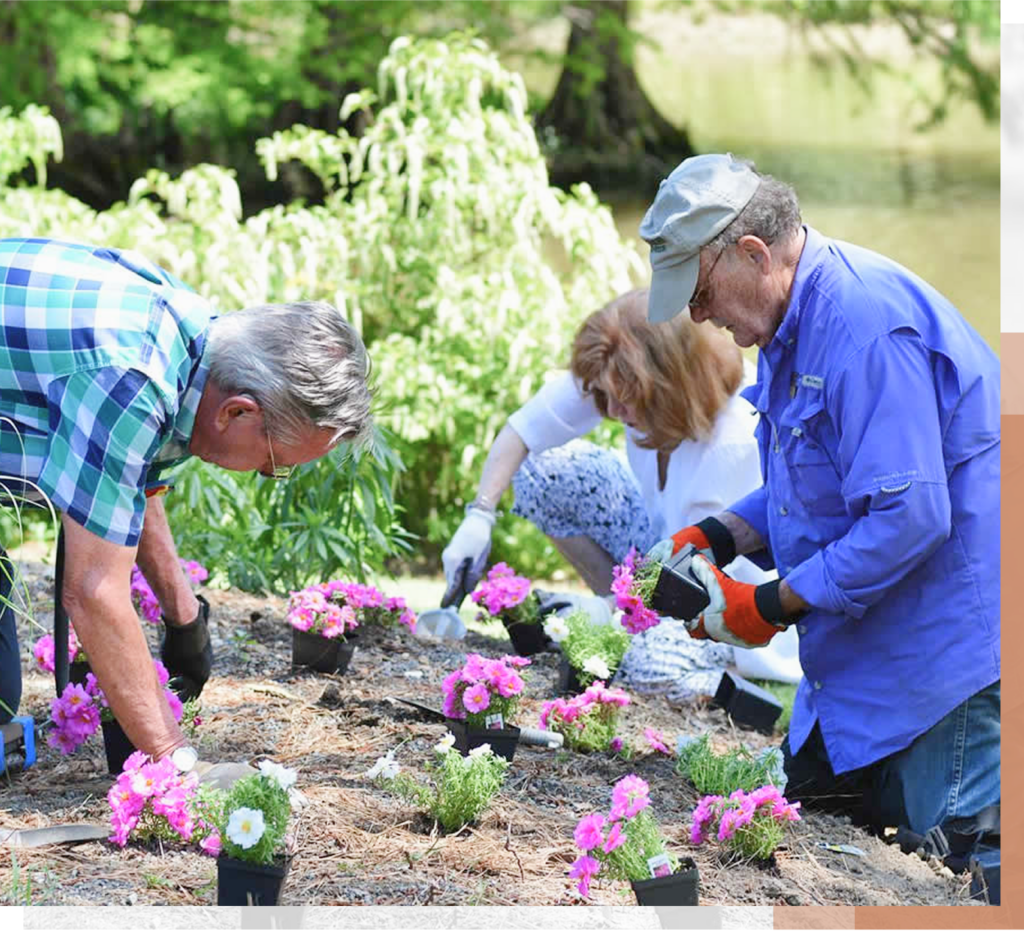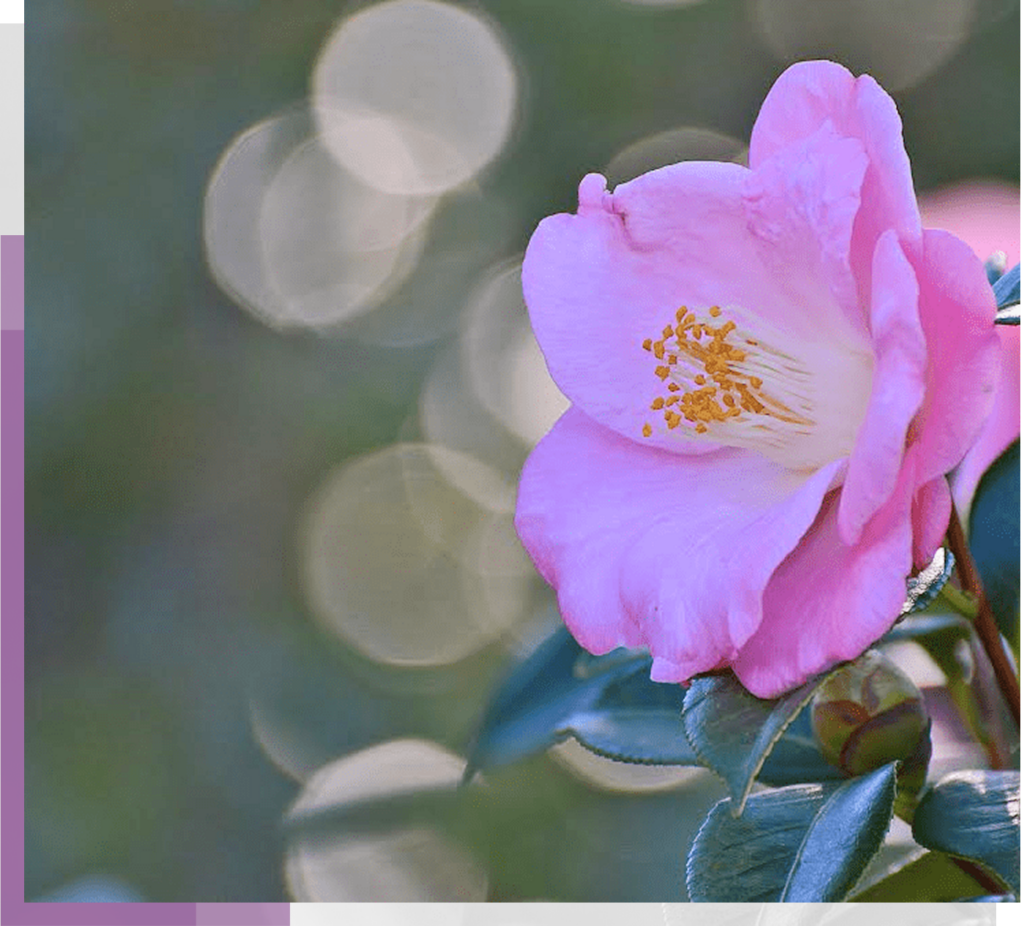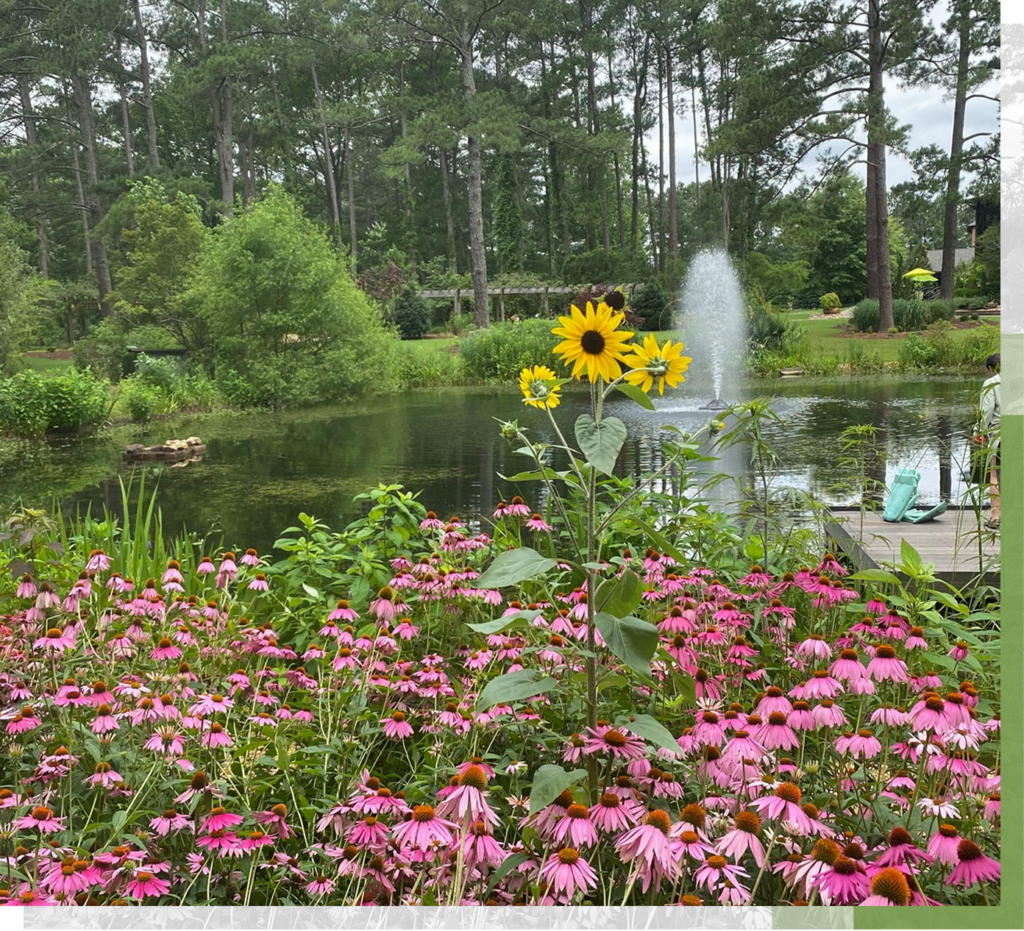In 1989, a handful of passionate gardening enthusiasts in Fayetteville shared a grand vision: to create a world-class botanical garden that would inspire, educate, and enhance the community.
Led by Bruce Williams, Martha Duell, and Roger Mercer, these visionaries gathered at Martha Duell’s kitchen table to dream, plan, and set the foundation for what would become Cape Fear Botanical Garden. The effort began with the establishment of the Friends of the Botanical Garden, a group united by dedication, laughter, and unwavering perseverance.


That same year, the group secured a lease on 67 acres of city-owned land, formerly known as Pope Park, and developed an ambitious 20-year master plan.
Early efforts included identifying over 450 native plants, engaging hundreds of legacy members, and publishing the first Garden newsletter. These initial milestones laid the groundwork for a botanical garden that would become a treasured gem of Fayetteville.
The Garden’s historical roots deepened with the donation of the farmhouse complex from the 1800s by Hazel McCauley, with the support of Larry and Susan Snider. This Heritage Garden complex includes a farmhouse, general store, corn crib, and smokehouse, offering visitors a glimpse into the region’s agricultural past.
The McLaurin Camellia Garden was established, featuring over 100 transplanted camellias from Mary McLaurin’s garden in Bath, NC, further enriching the Garden’s offerings.
A 1930s tobacco barn was relocated from Eastover to the Heritage Garden, preserving a vital piece of regional history
The City of Fayetteville donated the leased land to Cape Fear Botanical Garden, securing its future and strengthening its connection to the community.
Fayetteville Technical Community College built and dedicated the Wesley Meredith Horticulture Education Center, providing a space to cultivate education and inspire future generations.
A significant milestone was reached with the opening of the Wyatt Visitors Pavilion Complex, a 33,000-square-foot facility that expanded the Garden’s ability to host events, serve visitors, and support community engagement.
A new strategic master plan was developed to propel the Garden into its next phase of growth and impact.
Work began on the Eleanor and Raymond Manning Children’s Garden, a vibrant space designed to inspire young minds and foster environmental education. It was opened to the public in September 2020.
The Garden’s proximity to the Cape Fear River has brought its share of challenges. Hurricanes Matthew (2016) and Florence (2018) left their mark, but the Garden’s resilient spirit ensured recovery and continued growth, preserving its role as a sanctuary of beauty and connection.


Cape Fear Botanical Garden has grown into an 80-acre treasure, showcasing a balance of intentionally curated gardens and natural landscapes that reflect the untamed beauty of North Carolina. Visitors can explore paved pathways lined with vibrant plantings or wander dirt trails where Mother Nature thrives undisturbed.
Signature attractions include:
Navigate the Garden like a pro with click-and-learn descriptions of trails, sculptures, and signature spaces.
From hands-on workshops to seasonal festivals and family fun, our calendar is full of ways to explore, learn, and connect.
Whether you’re planning an intimate affair or a grand event, our versatile spaces offer a unique and unforgettable experience.
Explore hands-on, standards-aligned experiences for PreK–12 students—on-site or at your school. Also great for scout groups & other organizations.
Make the most of every visit with an annual membership—enjoy unlimited admission, exclusive perks, and reciprocal access to 300+ gardens.